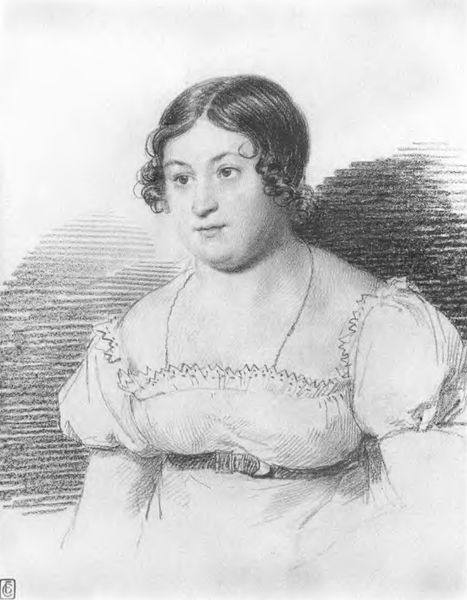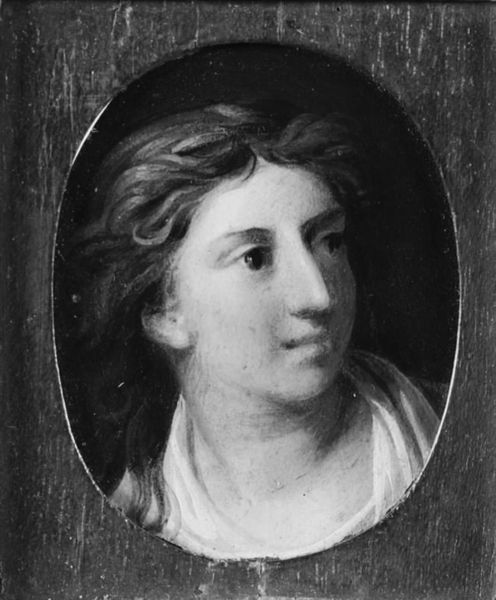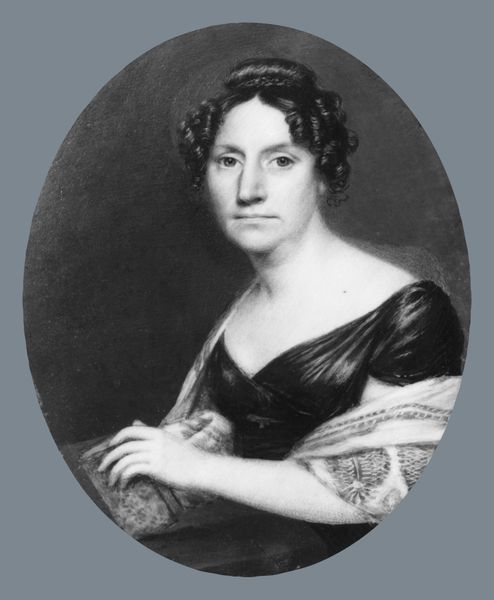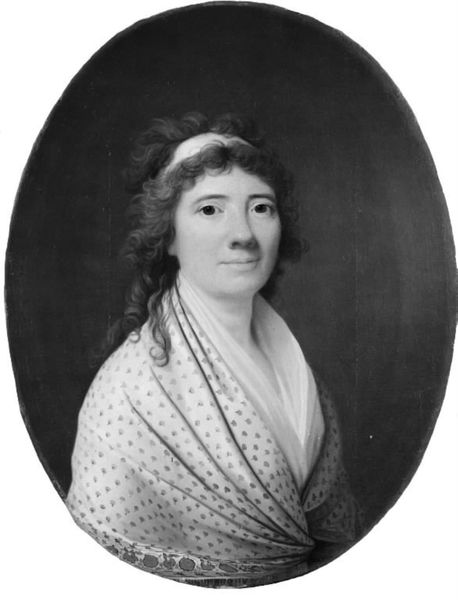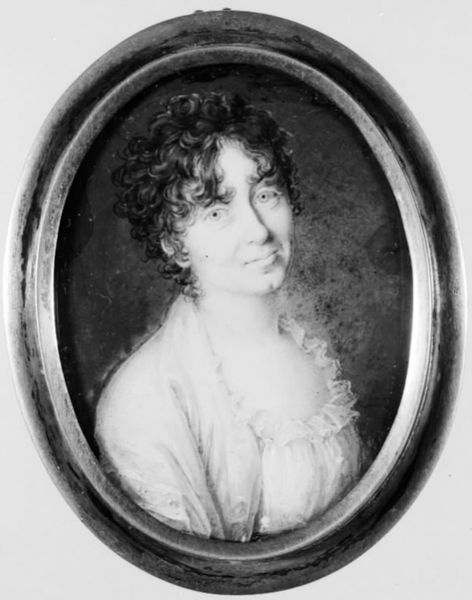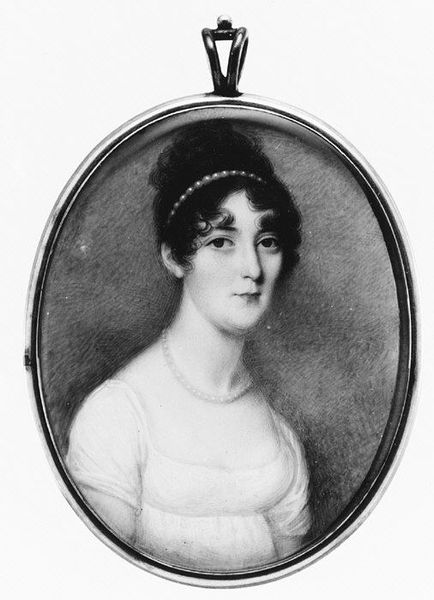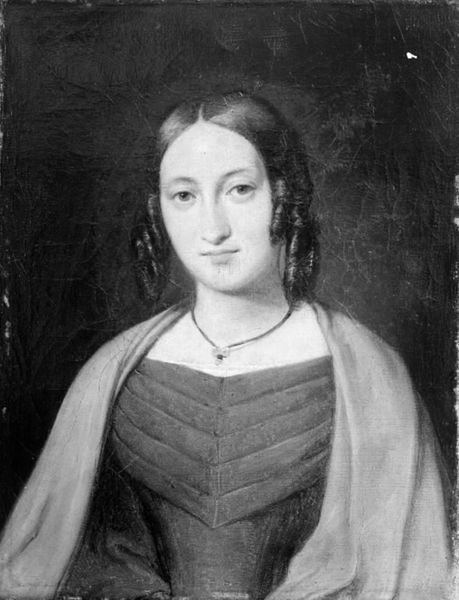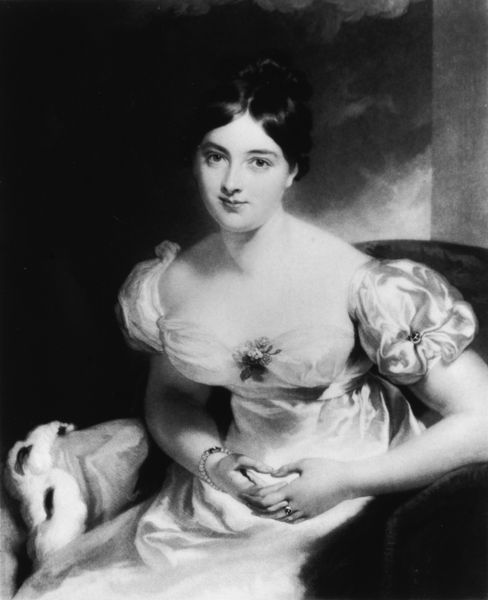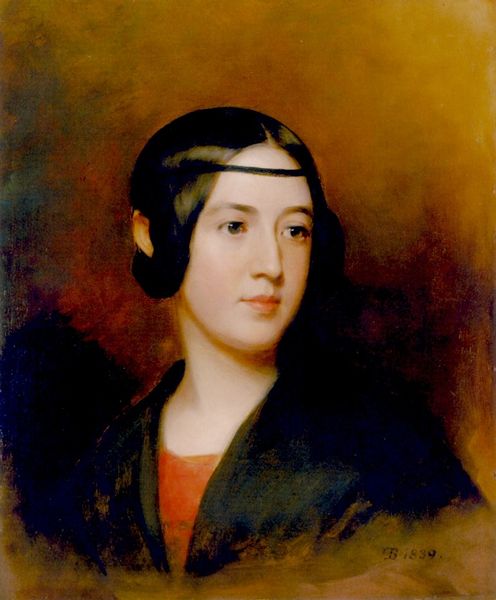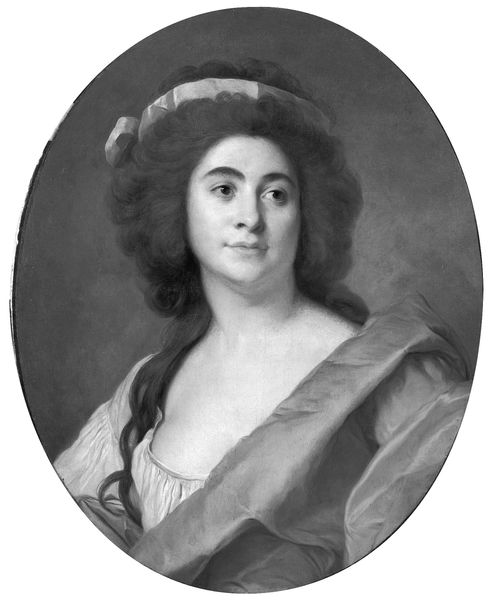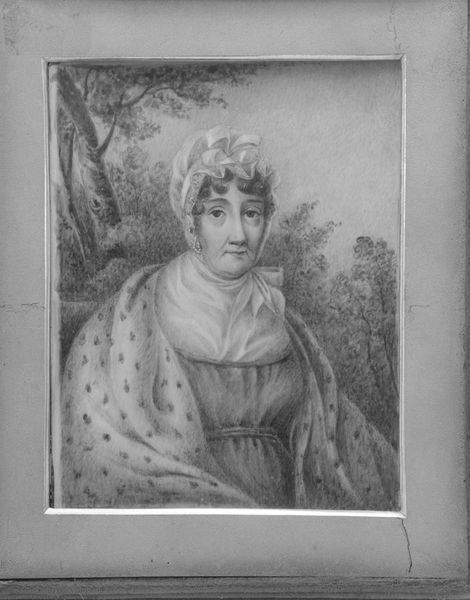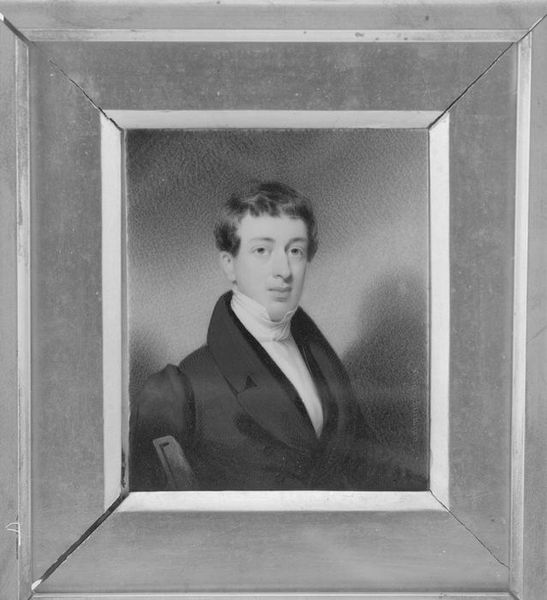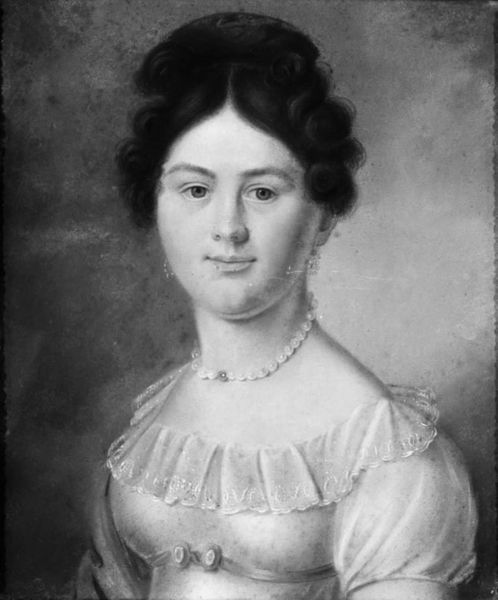
drawing, paper, pencil
#
portrait
#
drawing
#
portrait
#
paper
#
romanticism
#
pencil
Dimensions: 38 x 32 cm
Copyright: Public domain
Curator: This is Orest Kiprensky's 1817 portrait of Elizabeth Khitrovo. A pencil drawing on paper, it captures its subject with remarkable sensitivity. What strikes you first about it? Editor: The sheer expressiveness he coaxes from such a simple medium. The subtle gradations, the soft light…it's a study in understated emotion. Her gaze, averted but thoughtful, holds a world of feeling. Curator: And there's context here too. Khitrovo was a prominent figure in Russian society, known for her intelligence and literary salon. She was the daughter of Field Marshal Kutuzov and her circle was considered influential and provided connection within a strongly class-divided society. This work would’ve acted almost like a document. Editor: It certainly speaks of a cultivated world. I’m noticing the interplay between the controlled precision of the lines defining her face and neck and the softer treatment of her hair and shawl. This contrast directs my eye towards her expression, making it the central focus. Curator: Indeed. Kiprensky’s Romantic style blends academic technique with an emotional intensity, reflecting the social ideals of the era, where individuality was growing, but still constrained by expectation. These paper-based portraits were increasingly becoming an alternative way to reproduce and circulate images. Editor: Looking closely, you can see where the paper fibres interrupt the pencil work. These little details add an unexpected roughness. How are we meant to resolve the intimate portrayal with the mechanical possibilities the work presented? Curator: Well, this raises questions about consumption, of course. The drawing becomes both a testament to individual likeness and social status but it is only charcoal on paper. Editor: In short, he makes a statement about the individual using only base materials! The soft tonal gradations seem to push the boundary of its production—this almost imperceptible range creates her soft but distinct look. Curator: Considering all of that—its formal grace and production context—one sees it isn’t just a likeness; it’s a statement about the cultural landscape of early 19th century Russia. Editor: And I would just add to that, it demonstrates how aesthetic simplicity can invite multilayered critical readings.
Comments
No comments
Be the first to comment and join the conversation on the ultimate creative platform.
